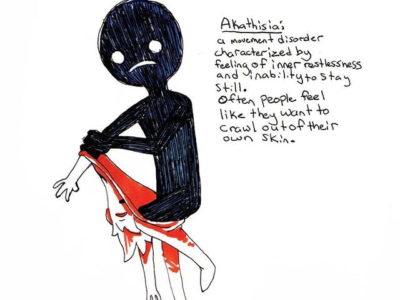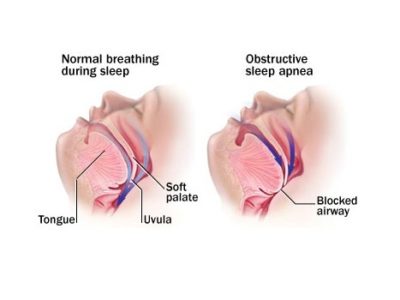
Title: Pica Disorder
Author: Rama khaled hussban
Editor: Ihdaa Mahmoud Bani Khalaf, Sadeen Eid
Reviewer: Ethar Hazaimeh
Keywords: pica, pagophagia, iron deficiency, lead poisoning
Introduction
The term “Pica” has come from “pica-pica” the Latin word for the magpie bird; because of gathering and eating a variety of objects for curiosity.1 And the American Psychiatric Association’s Diagnostic and Statistical Manual of Mental Disorders, Fifth Edition (DSM-5) defines a pica as eating nonnutritive, nonfood substances over a period of at least one month.2
Pica refers to the persistent, compulsive craving to ingest inedible substances. And for diagnosis, this behavior must last for at least one month, also not be in keeping with the child’s developmental stage, and not be socially normative or culturally acceptable.3
Pica is common in children between 18 months to six years, women during pregnancy, and intellectually impaired persons.1 However, pica usually occurs as an isolated disorder, some states occur with schizophrenia, autistic spectrum disorder, attention-deficit hyperactivity disorder, depression, OCD, and trichotillomania.3,4,5
Epidemiology
It is difficult to evaluate the exact prevalence of pica because of different studied populations, cultural practices, regional differences, under-reporting, etc.1 Although pica is more occurrence than is expected either because the condition may be overlooked by physicians or under-reported by patients or parents.1
Pica is a little more common in boys than girls. It is also more common in blacks than whites. The percentage of prevalence decreases with age. And it is more common among children in lower socioeconomic classes, immigrants, and refugees.6 The incidence is increased in children whose siblings or mothers have pica before. Children with sickle cell anemia are at greater risk for developing pica than those without sickle cell anemia.1, 7
A German prevalence study of 804 children observed that 12.3% of children have been associated with pica behavior at some point in their lives.1 A meta-analysis of studies on the prevalence of pica during pregnancy showed that 27.8% of pregnant women reported experiencing pica. The study also declared that the sample was heterogeneous throughout the world, with a higher prevalence in Africa compared to other continents. And even the prevalence rate of pica could be as high as 77% in African children.2 A high prevalence of pica seems to be reported in patients with mental retardation, almost 10%; it correlates with the severity of mental retardation.1
Etiology
There is not a direct cause for pica, but there are many risk factors such as child neglect, stress, maternal deprivation, low socioeconomic status, etc.1,8
There is some evidence that pica is an attention-seeking device; the high incidence of working mothers and families with young children may suggest this behavior.1 Moreover, relief of anxiety and emotional stress in the child by oral gratification is often a psychological response to an absent or poorly functioning mother.9
lesions in the hypothalamus and anterior cingulate gyrus may lead to hyperphagia. Thus, abnormalities in the eating center of the hypothalamus may result in pica in some individuals. And the mentally disabled child remains at a more infantile developmental level for longer than the normal child.10
Iron deficiency anemia has an implicated hand. Many population-based studies have observed low serum iron/ferritin and other micronutrients among patients with pica.11,12 However, a study conducted with substances consumed by patients with pica has not shown an increase in the bioavailability of iron among these substances.13 This suggests that the idea that these cravings arise from a need for serum iron is an inadequate pathophysiological explanation for this phenomenon.13
Pet-keeping motivates pica as children may eat pet food by imitation.1 Occasionally, pica may be associated with medications such as risperidone, olanzapine, and tramadol.14 In animal studies, cisplatin can induce pica behavior in specific strains in mice.15
In pagophagia(ingestion of ice), a Japanese study hypothesized that when a patient with anemia chews ice, it rises perfusion and improves brain function. They contributed to the activation of the dive reflex which would lead to peripheral vasoconstriction and an increase in central perfusion.16 Another explanation can be sympathetic activation which would also increase blood flow to the brain.16
DSM 5 Diagnostic Criteria 32
- Persistent eating of nonnutritive, nonfood substances over a period of at least 1 month.
- The eating of nonnutritive, nonfood substances is inappropriate for the developmental level of the individual.
- The eating behavior is not part of a culturally supported or socially normative practice.
- If the eating behavior occurs in the context of another mental disorder (e.g., intellectual disability [intellectual developmental disorder], autism spectrum disorder, schizophrenia) or medical condition (including pregnancy), it is sufficiently severe to warrant additional clinical attention.
Clinical manifestations
The materials ingested as a result of pica depend on availability in the environment and conscious selection factors.1
Various substances may be craved, including clay (geophagia), raw starch (amylophagia), dirt (co-niophagia or chthonophagia), hair (trichophagia), ice (pagophagia), raw, raw potatoes (gemelophagia), fibrous plant roots (phytobezoar), paint chips (plumbophagia), sand, pebbles/stones (lithophagia), sharp objects (acuphagia), glass (hyalophagia), soap (sapophagia), feces (coprophagia), burned matches (cautopyreiophagia), uncooked rice (ryzophagia), paper (xylophagia), vomitus (emetophagia), wooden materials, sponge, polyurethane foam, grass, leaves, paper, chalk, baby talcum powder, crayons, pencil erasers, cigarette butts, ashes, charcoal, coins, buttons, cloth, eggshells, and insects. 1,3,17
Coprophagia and emetophagia usually occur in individuals with neuropsychiatric disorders. 18 Geophagia and amylophagia are the most common types of pica.17
Clinical signs are usually secondary to complications related to the substance ingested, as the physical examination is often normal in children with pica.19 Bezoar formation results in mechanical bowel problems, intestinal obstruction, and perforation.19 Lead poisoning appears with neurological signs such as(lethargy, seizure, headache, encephalopathy, cranial nerve palsy, and papilledema) as well as gastrointestinal signs such as( constipation, abdominal pain, colic vomiting, anorexia, and diarrhea).19 Toxocara and Ascaris parasitic infectious agents in clay lead to signs including cough, fever, myocarditis and encephalitis, visual disturbance, and hepatomegaly.19
Evaluation
Laboratory evaluation should be based on suspected ingestion.1 A peripheral smear, complete blood count, and differential white cell count may be needed to determine if there is iron deficiency anemia (hypochromic, microcytic anemia), parasitic infestation (eosinophilia), or lead poisoning (punctate basophilia).1
Lead (in pica for paint and chalk) and zinc levels should be checked whether appropriate.20 A basic metabolic panel should be obtained, especially in clay ingestion which may cause metabolic disturbances such as hypokalemia. 21
If parasitism is suspected, fecal samples should be examined for ova and parasites. 1 If increased lead absorption is suspected, X-ray examination of long bones may show bands of increased density at the metaphyses known as “lead lines”.1 A plain abdominal film should be considered in children with abdominal symptoms. 1
Complications
The complications of pica can be classified by the type of substance ingested.1
Pagophagia leads to iron deficiency (especially during pregnancy), tooth decay, and sensitivity while amylophagia can cause high blood sugar and obesity due to its high carbohydrate content.22,1 Also, excessive starch consumption has been associated with iron deficiency anemia.23
The ingested material likely induces a secondary iron deficiency anemia either by binding the iron to the clay particles or by acting as an ion exchange resin.1
Geophagia can lead to hypokalemia with myopathy, iron and zinc deficiency, intestinal obstruction or perforation, dental injuries, and parasitic infestations.24 Clay also is a source of many infectious agents such as parasites. In addition, geophagy is also a significant cause of lead poisoning.1
As a result, both lead poisoning and iron deficiency can lead to impaired neurocognitive development.25
Pica with baking soda may lead to electrolyte abnormalities such as zinc deficiency, hypokalemia, hyperkalemia, hyperphosphatemia, and metabolic alkalosis. And Electrolyte disturbance is more common in patients with chronic renal disease.1
Pica during pregnancy can have dangerous consequences on the growing fetus, it can cause intrauterine toxicity which may kill the fetus. Maternal geophagy has been associated with childhood motor function delay too.26
Sometimes, fatalities can result from intestinal obstruction, bowel perforation, infections (bacterial, parasitic), poisoning (lead, mercury, arsenic, phosphorous), and electrolyte imbalances (hypokalemia, hyperkalemia).27
Management
Using strategies to decrease exposure to the craved substance, such as reducing access or providing an appropriate substitute with a similar texture.28 If there was a deficiency in iron, zinc, and another nutrient, provide supplementation.29 Differential reinforcement is a common strategy to get patients to respond differently to pica by redirecting the unwanted behavior to other activities.30
Behavioral therapy can reduce the severity of pica by 80% in mentally disabled individuals.31 Anticipatory guidance, for teaching children the dangers of pica in communities where pica is common, may have a good role in preventing pica.1
Relieving family economic and housing difficulties, and attention to the individual’s emotional needs and stresses are very important for treatment.1 An understanding and supportive attitude for the mother may enable her to provide better care for the child.1
Conclusion
Pica is an important issue to highlight. It has mainly associated with iron deficiency and lead poisoning. So the medical field should share awareness about diagnosis, risk factors, and complications.












